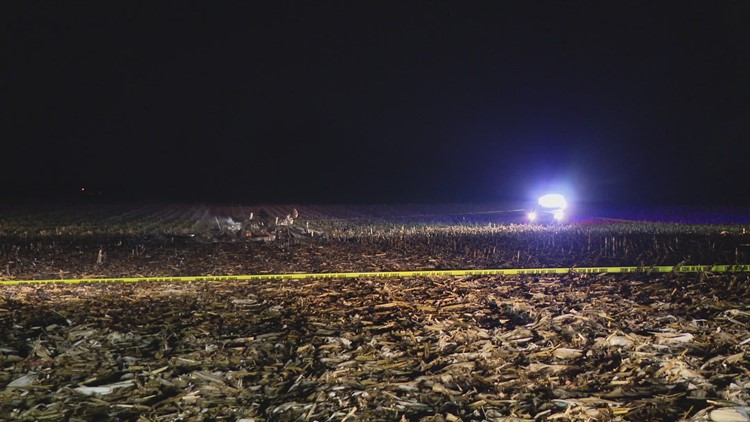SHELBYVILLE, Ind. — A preliminary report on a crash that killed two people near the Shelbyville Municipal Airport in November gives new insights into how the disaster unfolded from the perspective of a witness on the ground.
Bloomington resident Nathan Finney and Warren Bruhl of Illinois died in that crash.
The report was compiled by the National Transportation Safety Board, an independent federal agency tasked with investigating civil accidents across the country.
The afternoon of Nov. 22 around 4:46 p.m., two people were killed when a single-engine aircraft crashed near the Shelbyville Municipal Airport. The plane had originally taken off from an airport in Bloomington.
The plane, a Cirrus SR22, went down near the 6300 block of CR North 325 West in Fairland, just northwest of the airport. The airplane was operated under Title 14 Code of Federal Regulations Part 91 as an instructional flight, the report said.
A witness, who was traveling eastbound on I-74, reported she saw a small airplane to her left flying over a field heading south. That witness stated that the airplane was very low, and looked stalled or as if it was hovering or hanging. The witness estimated the airplane’s altitude was 200 feet above ground level at that time.
As the airplane approached the witness’s position, it took a sharp turn to the left or east. Immediately after turning east, the airplane seemed to lose all control, according to the report.
The left-wing dipped and the airplane was fully sideways, with the wings vertical, according to the witness. The airplane then made a rotation to the right with the wings vertical once more.
"The witness thought that the airplane rotated to the left one more time and then leveled out extremely low to the ground," the report stated.
The airplane then disappeared behind trees, around an estimated altitude of 50 to 100 feet above ground level. The witness then reported seeing thick, black smoke a second or two after the plane disappeared behind the trees.
The witness did not see any parts come off the airplane, and they did not see the airplane’s parachute system be deployed before it hit the ground.
A post-accident examination of the airplane revealed that it was destroyed by impact forces and a fire that happened after the crash. Crews recovered the main wreckage, which consisted of fuselage, wings, empennage and engine, from a corn field. It was about 40 feet from a ground scar that appeared to show left and right-wing leading edges with an airplane nose in the center of both impressions.
The nose impression contained propeller blades, the report said.
Additionally, there were marks consistent in shape with propeller slash marks near the outermost area of the right-wing impression.
Investigators noted the information contained in the report is preliminary and subject to change.
It was a Class 3 investigation, meaning investigators will work to identify safety issues that could reveal the underlying cause of the accident. Findings from the investigation could later be used to support safety recommendations industry wide.



